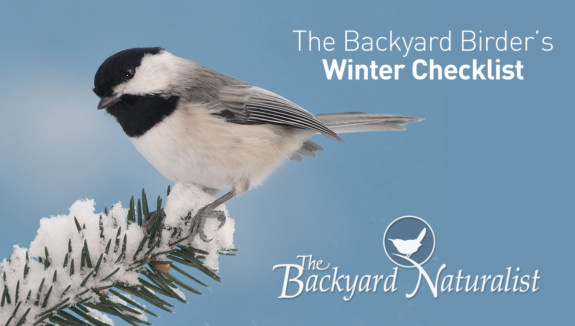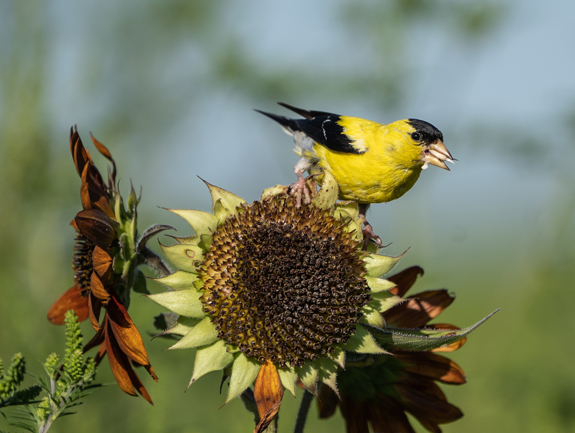Help your backyard birds get through winter by focusing on fundamentals
Here’s our winter checklist for backyard birders and supporting wild birds in Winter. We’re keeping this simple: Focus on providing three fundamental needs. Be prepared to provide them consistently—even during the worst winter weather!
Helping your birds survive and thrive comes with rewards for all! Seeing healthy birds frequent your feeders and baths each day will be a joy. Your backyard birds can help you get through this winter, too!!
Food – Feeding Wild Birds During Winter
Maximize nutrition in your feeders.
Provide high calorie seeds and suet with essential protein, fat and carbohydrates.
Food quality directly affects birds’ ability to survive cold weather. Keeping warm takes extra calories! With fast-acting metabolisms, birds must be efficient eaters. For survival, they absolutely must maximize each and every opportunity for nourishment. Quality food in clean feeders matters!! You may also need to check feeders more frequently for refilling.
Please remind your friends and family to never feed bread to birds. Bread has ZERO nutrition while filling birds’ stomachs, robbing them of their best chance of not freezing to death.
Find the facts here: Bread is Bad for Birds
Birds Need Water All Year Round for Drinking and Bathing. Even in Winter!
Keep bird baths from freezing over.
Get heated bird baths or add deicers.
We can never, ever, say it enough: Water is critical year round for wild birds to drink and bathe. During freezing temperatures, your heated bird bath might just be the only accessible, unfrozen source of water nearby for your backyard birds.
See our website: Birds, Water and Winter
Your Bird House is Welcome Shelter from Freezing Winter Weather
Have bird houses up now.
Bird houses offer sanctuary for songbirds during winter weather.
Yes! Your bird houses offer songbirds, like Bluebirds, Chickadees, Titmice and Carolina Wrens (among others), safe places to keep warm and roost when weather is extreme. Be sure you’ve removed all previous nest debris.
Learn more: Shelter Birds During Winter in Your Bird HousesBonus: Even if birds aren’t using your houses, they’re making note of their locations ahead of nesting season. Especially early nesters like Bluebirds. (It won’t be long!)
We hope you and your families are well. Thank you for supporting wild birds. Your continuing support of our efforts here at the store means the world to us.
Happy Winter Birding!
Debi & Mike Klein and The Backyard Naturalist Team
Food + Water + Shelter = Habitat!
By providing your birds, quality food, un-frozen water and opportunities for respite from winter weather, your backyard now has the three simple elements that define a ‘micro-habitat’! Find out more about how important our backyard micro-habitats are, and the contribution each little backyard patch makes to the overall well-being of wild birds. See our Habitat resources in the top menu.






